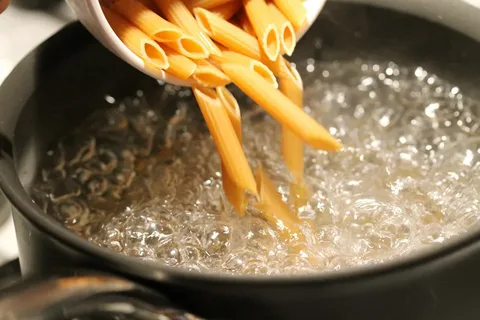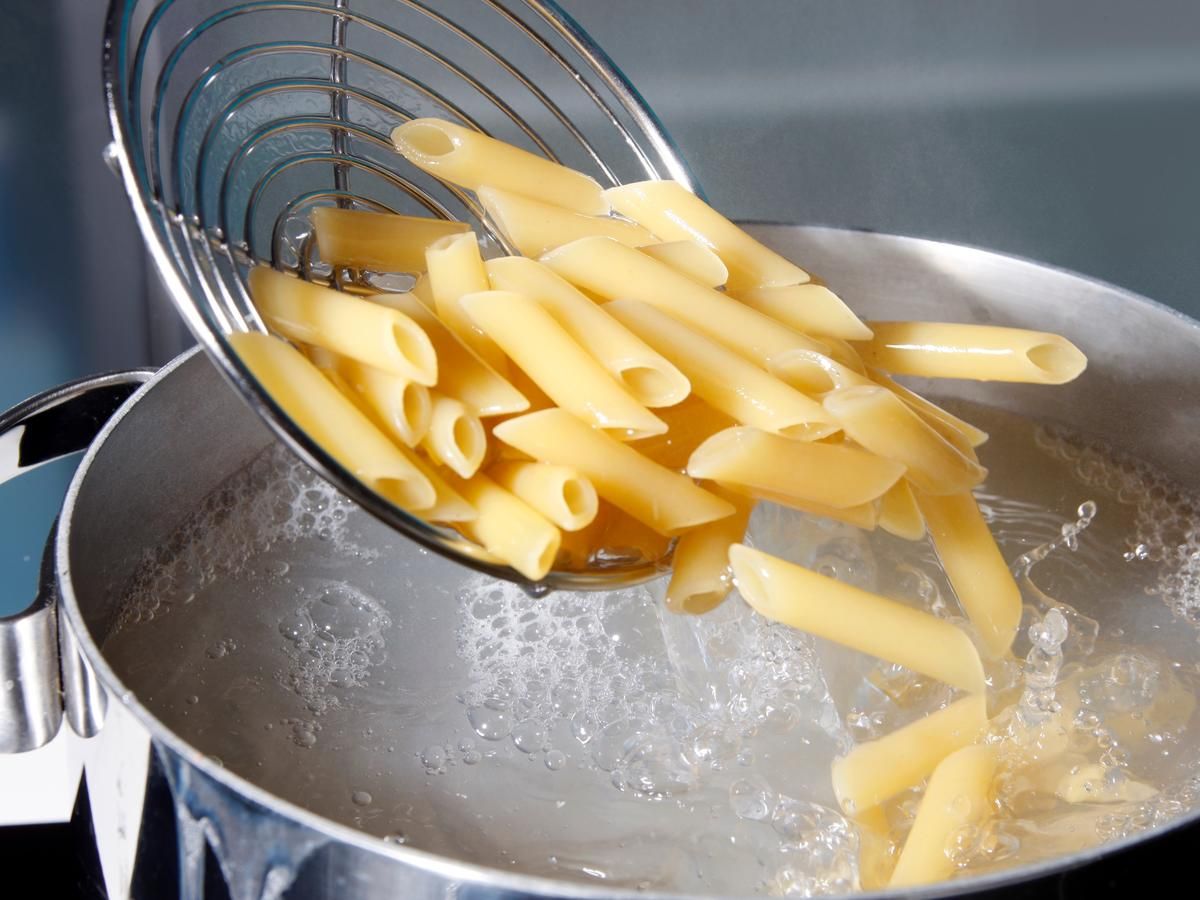A legacy of innovation, quality, and culinary experience.
Read our NewsletterDiscover expert tips for optimizing pasta boiling time to enhance quality and efficiency in your restaurant kitchen. Perfect every dish!
Cooking pasta seems simple. Right? You just throw some pasta into a hot boiling pan of water and there you go. But if you want a perfectly cooked pasta that can enhance the taste of your quick dinner fix, here are a few tips and tricks that make all the difference.
This guide covers everything you need to know, from the amount of pasta per person to the pasta boiling time. One quick read-through and you’ll be ready to impress your colleagues and clients.
Hi there! I’ve been wanting to write this guide for a while now. Cooking pasta might seem basic, but trust me, there are always tricks to learn. After cooking endless pots of pasta, I’ve discovered the ideal ratios of salt and water, as well as other little-known secrets to cooking ideal pasta dishes. From how long to boil pasta to cooking pasta in a savory sauce, this is your one-stop guide for delicious pasta every time.
I’ll keep it simple—quick steps and helpful tips only. So, let’s get started with cooking pasta,
In this article, I will discuss;
- Amount of pasta per person
- How much water to boil pasta in
- How much salt to add to pasta water
- How long to boil pasta for
- Why save pasta water?
- Finishing pasta in the sauce
- Common mistakes to avoid
- Final touches
- Recipes you’ll love!

For the perfect pasta-to-sauce ratio, it helps to weigh your pasta portions, Here’s the rule of thumb for Goody’s range of Pasta:
- Goody’s Dried pasta: 100g per person.
- Goody’s Fresh pasta: 150g per person.
Always use large pots of water, but using too much water dilutes the starch. The starch from the pasta helps to make the sauce stick better. Less water is better for starchier water! Here’s the ideal ratio:
- 2.5 quarts (2.5 liters) of water for 400g of pasta (serves 4 people).
Salting the water is crucial—it’s your only chance to season the pasta itself. Here’s my go-to:
- For 2.5 quarts of water and 400g pasta, I add 1.5 tablespoons of iodized salt easily available in the market.
- For kosher salt, you might need more, but you can adjust based on taste.
Pasta comes in different shapes and textures, and the cooking time may vary for each shape. However, here is a common rule for cooking dried and fresh pasta.
- Dried pasta: Cook it one minute less than the packet instructions so you can finish it in the sauce.
- Fresh pasta: Cooking time is much shorter. Cook it in boiling water for 3 to 6 minutes depending on thickness and shape.
Pasta water is often called “liquid gold” for a reason. The starchy water helps to:
- Thicken sauces.
- Make the sauce cling to the pasta.
Always set aside a cup of pasta water before draining to add to your sauce!
Never serve pasta with sauce just spooned on top! For the best flavor:
- Transfer undercooked pasta into the sauce.
- Let it cook in the sauce for 2-3 minutes, allowing it to absorb the flavors.
- Never rinse pasta with water. It washes away the starch.
- Don’t add salt before the water boils (it could damage your pot).
- Don’t add olive oil in the pasta water. It doesn't do anything except wasting oil.
- Don’t break pasta. Many people think that breaking the long pasta like spaghetti into two can reduce its cooking time. However, it is not the case.
- Warm your plates before serving. Pasta cools fast, and this simple step keeps it warm longer.
- Have everything ready before serving because sauces can dry up quickly. Serve as soon as it's done!
- Grate fresh Parmesan over the top with a microplane for the perfect finishing touch.
Check out our recipe section for delicious sauces to go with your perfectly cooked pasta. Here are a few best recipes to get you started:
- Orecchiette with Spiced Duck Ragu for a meaty one
- Arabic-style Mac and Cheese Pasta for something quicker and light.
- Classic Pasta with Pumpkin and Sage for a traditional favorite.

- 400 grams dried pasta or 600 grams fresh
- 2.5 quarts water that is pretty much 2.5 litres too
- 1.5 tablespoons salt ( Check details in the section above)
- Boil the water in a medium or large saucepan.
- Now add the salt once the water reaches the boiling point.
- Add your pasta and cook, undercooking from the package instructions by a minute.
- Set aside a cup of pasta water right before draining.
- Transfer the pasta straight into your pasta sauce and gently cook it for a minute or two together.
- Transfer the hot and savory pasta to the serving dish and garnish it with fresh parmesan cheese.
Read the above section for more details about each step to give your pasta dish the desired taste and texture.
I hope this guide helps you cook the perfect pasta! Share your thoughts or any tips you have in the comments. If you try any of our recipes, tag us on Instagram—We’d love to see your dishes!

The pasta gets the perfect flavor in ideally salted water. If you don’t add sufficient salt to the boiling water, your pasta will taste bland. The golden rule of pasta is 10-100-1000. It means putting 10 grams of salt into 100 grams of pasta and cooking it in 1000 grams of boiling water.
The cooking time of pasta varies depending on its thickness and age. If the pasta is thick, it will take longer to cook because it requires more water than the thinner shapes. Moreover, the age of the pasta also matters. Fresh pasta cooks in a few minutes while the dried pasta first absorbs water before it starts to cook.
Each pasta type takes a different time to cook. Angel hair or Cappellini are thin pastas and they cook faster than any other long dried pasta. Spaghetti takes around 8-10 minutes. Linguine is a thicker variant and takes 10 or more minutes to cook. Fettuccine also takes around 10 minutes.
Homemade pasta is prepared in less time as compared to store-bought dried pasta. It hardly takes 3-4 minutes to cook in salted water and embrace the taste well. The trick is to keep checking it in one-minute intervals until it is properly cooked.
Overcooking the pasta ruins its texture and taste. If you cook the pasta for too long, it gets soggy and mushy and if it's cooked for a short while, you will get hard chewy pasta. So, the trick is to keep checking it at short intervals and drain it once you feel it is perfectly cooked.